Stepping into the world of astronomy can feel like unlocking a hidden realm. The vastness of the night sky, dotted with distant galaxies, swirling nebulas, and familiar planets, beckons us to look closer. For anyone eager to explore these cosmic wonders from their backyard, a telescope is the essential tool. But with countless options available, choosing the right one can be daunting. This guide is designed to help you navigate the choices and find the top amateur telescopes that will bring the universe into stunning view in 2025. Whether you’re a complete beginner or looking to upgrade your setup, understanding what makes a telescope effective is key to an enriching stargazing journey.
Why Choose a Top Amateur Telescope?
Amateur astronomy offers a deeply rewarding experience, connecting us to the immense scale of the cosmos. A good telescope for amateurs isn’t just about magnifying distant objects; it’s about gathering enough light to reveal details invisible to the naked eye and providing a stable platform for observation or even imaging. The top amateur telescopes balance performance, ease of use, and budget, making the hobby accessible and enjoyable. Investing in a quality instrument from the start can significantly enhance your viewing experience, minimize frustration, and inspire continued exploration of the universe.
Understanding Telescope Types: Finding the Right Fit
Telescopes primarily fall into three categories based on how they collect and focus light: Refractors, Reflectors, and Catadioptrics. Each type has its advantages and disadvantages, making them suitable for different kinds of observing or imaging and varying skill levels in amateur astronomy.
Refractor Telescopes
Refractors use lenses to bend light and create an image. They are typically low-maintenance due to their sealed tubes, which keep optics clean and collimation (alignment) stable. They excel at providing sharp, high-contrast images, making them ideal for viewing the Moon, planets, and double stars. However, large aperture refractors can be expensive and prone to chromatic aberration (color fringing) in simpler designs. The Celestron Inspire 100AZ Refractor is a good example of a beginner-friendly refractor.
Reflector Telescopes
Reflectors use mirrors to gather and focus light. The most common design is the Newtonian reflector, featuring a large primary mirror at the back of the tube and a smaller secondary mirror near the front to direct light to the eyepiece. Reflectors offer excellent performance for their cost, especially in larger apertures, making them great for viewing fainter deep-sky objects like galaxies and nebulas. They can require occasional collimation and their open tubes can let dust in.
Catadioptric Telescopes
Catadioptric telescopes combine both lenses and mirrors to create compact, versatile designs. Schmidt-Cassegrains and Maksutov-Cassegrains are the most popular types. They offer a good balance of performance across different celestial objects, are relatively portable for their aperture, and have sealed tubes reducing maintenance. They are often more expensive than reflectors of similar aperture but are excellent all-rounders, particularly when equipped with computerized mounts. The Celestron NexStar 4SE is a notable Maksutov-Cassegrain among top amateur telescopes.
Key Features of Top Amateur Telescopes
Beyond the basic type, several key specifications and features influence a telescope’s performance and suitability for an amateur astronomer.
Aperture, Magnification, and Focal Length
- Aperture: The diameter of the main lens or mirror. This is the most critical specification as it determines how much light the telescope collects and its resolving power (ability to see fine detail). A larger aperture collects more light, allowing views of fainter objects and sharper details. For top amateur telescopes, aperture is often a primary consideration.
- Focal Length: The distance over which the light-gathering element focuses light. A longer focal length results in higher magnification with a given eyepiece.
- Magnification: Calculated by dividing the telescope’s focal length by the eyepiece’s focal length. While high magnification might seem desirable, the useful magnification is limited by the telescope’s aperture and atmospheric conditions. A telescope should provide a range of useful magnifications using different eyepieces.
Mount Types
The mount supports the telescope and allows you to aim and track celestial objects.
- Alt-Azimuth: Moves up/down (altitude) and left/right (azimuth). Simple and intuitive, often found on beginner scopes.
- Equatorial: Aligned with the Earth’s axis, allowing easier tracking of objects as they move across the sky due to Earth’s rotation. Essential for long-exposure astrophotography.
- Computerized (GoTo): Motorized mounts that can automatically locate and track objects from a built-in database. Great for beginners and convenient for experienced observers. Many of the top amateur telescopes feature GoTo capabilities.
Finderscopes
A small, low-magnification scope or sight mounted parallel to the main telescope. It has a wider field of view, making it easier to locate your desired celestial object before switching to the main telescope’s higher magnification. A good finderscope is invaluable for aiming any amateur telescope.
Top Amateur Telescopes Recommended for 2025
Choosing from the many excellent instruments available can be challenging. Based on performance, features, ease of use, and value, here are some of the top amateur telescopes we recommend for the current year, catering to different needs and experience levels.
Celestron NexStar 4SE
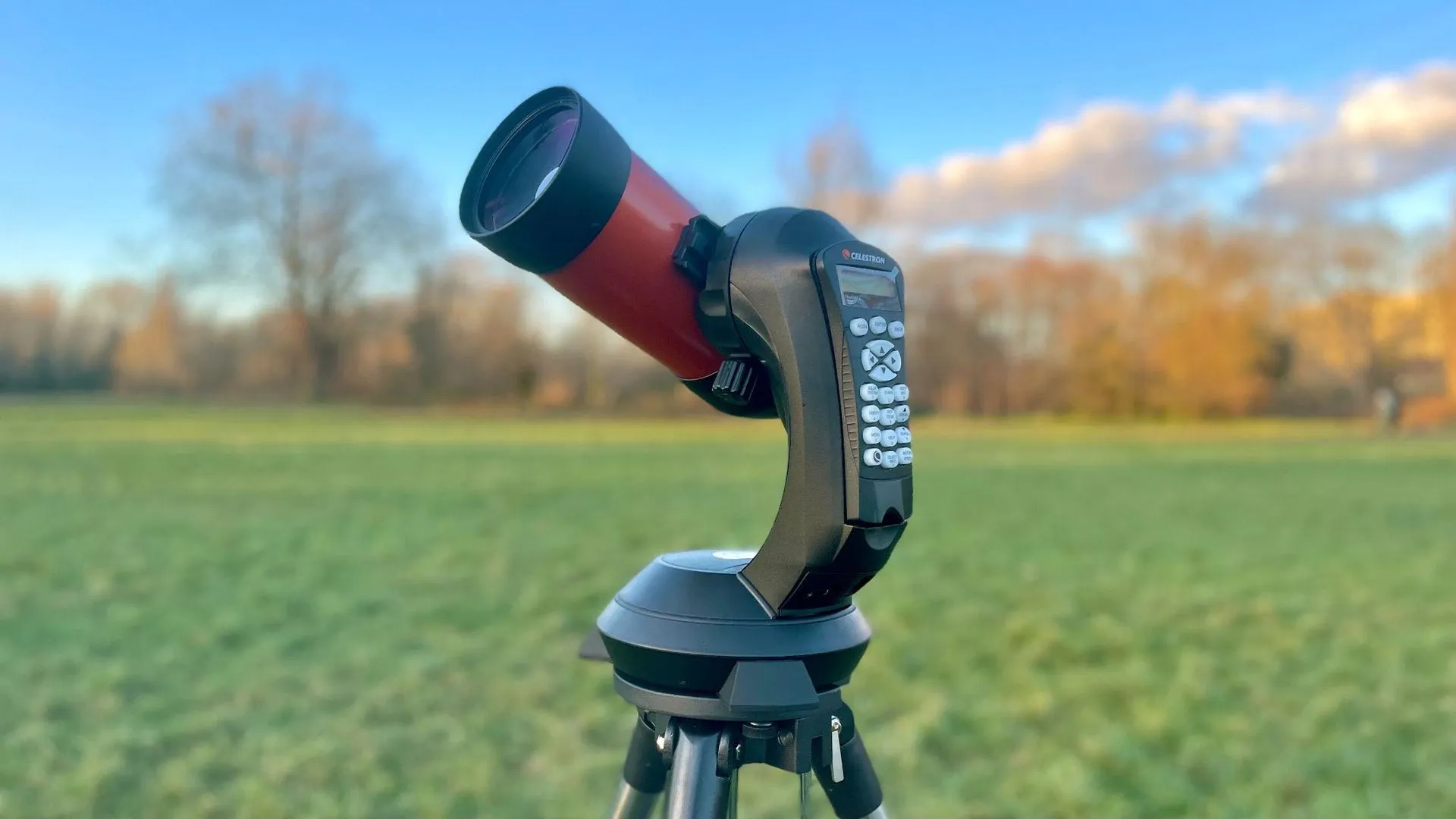
Celestron NexStar 4SE amateur telescope set up outdoorsA superb choice for beginners, the Celestron NexStar 4SE is a computerized Maksutov-Cassegrain telescope known for its ease of setup and use. Its GoTo technology simplifies finding celestial objects with Celestron’s SkyAlign system. With a 4-inch aperture and long 1325mm focal length, it excels at providing sharp views of the Moon and planets. While its narrow field of view isn’t ideal for large deep-sky objects and its portability is somewhat limited by the tripod design, its sturdy build and automated tracking make it one of the top amateur telescopes for effortless planetary observation.
Celestron Inspire 100AZ Refractor
 Celestron Inspire 100AZ beginner amateur telescope with accessoriesFor those starting out on a tighter budget, the Celestron Inspire 100AZ is a fantastic option. This 4-inch achromatic refractor is lightweight and easy to set up, offering sharp views of the Moon and planets. It comes with useful accessories, including a smartphone adapter cleverly integrated into the lens cap for trying out basic astrophotography. While it lacks GoTo tracking and may show some chromatic aberration, its user-friendly design and clear views make it a great entry point into amateur astronomy.
Celestron Inspire 100AZ beginner amateur telescope with accessoriesFor those starting out on a tighter budget, the Celestron Inspire 100AZ is a fantastic option. This 4-inch achromatic refractor is lightweight and easy to set up, offering sharp views of the Moon and planets. It comes with useful accessories, including a smartphone adapter cleverly integrated into the lens cap for trying out basic astrophotography. While it lacks GoTo tracking and may show some chromatic aberration, its user-friendly design and clear views make it a great entry point into amateur astronomy.
Celestron Astro Fi 130
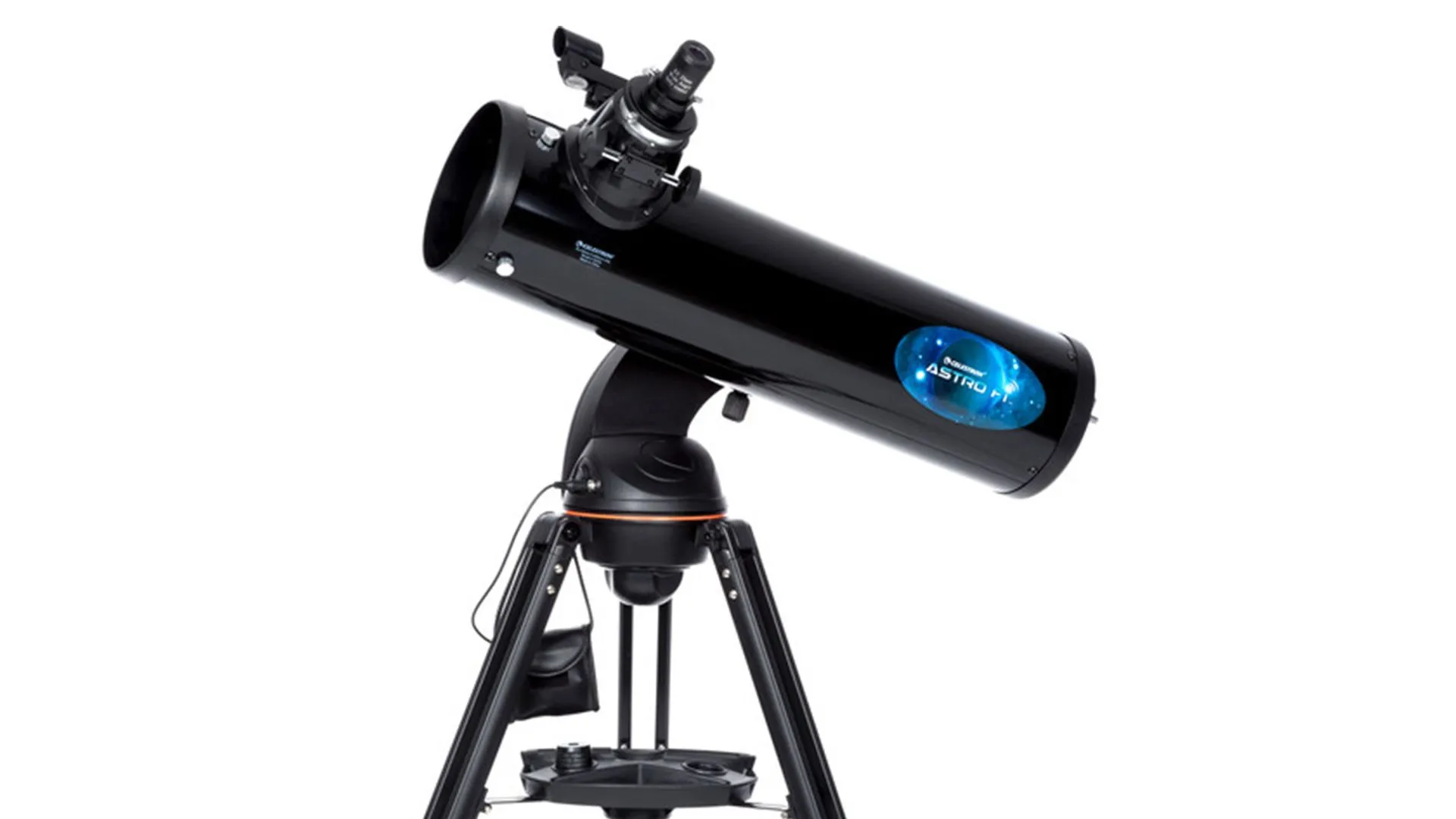 Celestron Astro Fi 130 Newtonian reflector amateur telescopeOffering excellent value for enthusiasts, the Celestron Astro Fi 130 is a computerized Newtonian reflector with a 130mm aperture. Its standout feature is integrated WiFi, allowing control via the Celestron SkyPortal app on your smartphone or tablet. This GoTo functionality, combined with a decent aperture for both planetary and deep-sky views, makes it a versatile option. It’s relatively portable and can recommend targets. While the included eyepieces and focuser are basic, upgrading them unlocks its full potential, solidifying its place among value-driven amateur telescopes.
Celestron Astro Fi 130 Newtonian reflector amateur telescopeOffering excellent value for enthusiasts, the Celestron Astro Fi 130 is a computerized Newtonian reflector with a 130mm aperture. Its standout feature is integrated WiFi, allowing control via the Celestron SkyPortal app on your smartphone or tablet. This GoTo functionality, combined with a decent aperture for both planetary and deep-sky views, makes it a versatile option. It’s relatively portable and can recommend targets. While the included eyepieces and focuser are basic, upgrading them unlocks its full potential, solidifying its place among value-driven amateur telescopes.
Celestron NexStar Evolution 9.25
 Celestron NexStar Evolution 9.25 premium amateur telescope on tripodFor the serious amateur astronomer seeking premium performance, the Celestron NexStar Evolution 9.25 is an exceptional GoTo Schmidt-Cassegrain. With a large 9.25-inch aperture and long focal length, it delivers breathtakingly crisp and detailed views of a wide range of celestial objects. Its robust computerized fork arm mount features a rechargeable battery for long observing sessions and can be controlled via the SkyPortal app. While it comes with a premium price tag and is not the most portable option, its stunning optical quality and advanced features make it one of the best amateur astronomer telescope options available for dedicated observers and astrophotographers.
Celestron NexStar Evolution 9.25 premium amateur telescope on tripodFor the serious amateur astronomer seeking premium performance, the Celestron NexStar Evolution 9.25 is an exceptional GoTo Schmidt-Cassegrain. With a large 9.25-inch aperture and long focal length, it delivers breathtakingly crisp and detailed views of a wide range of celestial objects. Its robust computerized fork arm mount features a rechargeable battery for long observing sessions and can be controlled via the SkyPortal app. While it comes with a premium price tag and is not the most portable option, its stunning optical quality and advanced features make it one of the best amateur astronomer telescope options available for dedicated observers and astrophotographers.
Celestron Origin Intelligent Home Observatory
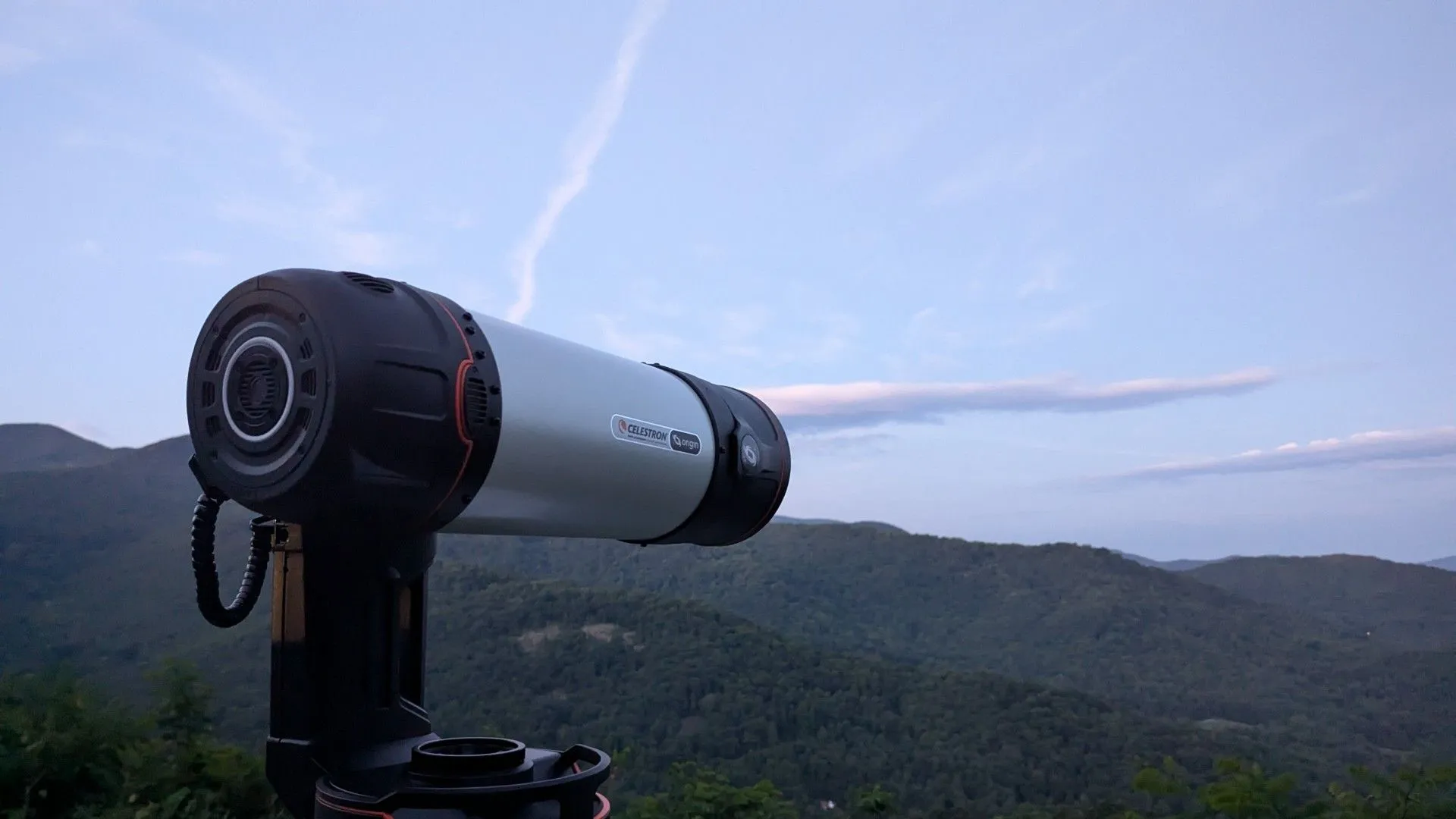 Celestron Origin smart amateur telescope for astrophotographyA departure from traditional telescopes, the Celestron Origin is a smart telescope designed specifically for astrophotography. It features a built-in camera instead of an eyepiece, displaying images on a connected mobile device. This 6-inch RASA telescope automatically focuses, tracks, and stacks images, producing stunning deep-sky photos in seconds, even from light-polluted areas. While not suitable for traditional visual observing and carrying a high price tag, its automated capabilities and image quality make it a unique and powerful tool for amateur astrophotographers, representing the cutting edge of top amateur telescopes for imaging.
Celestron Origin smart amateur telescope for astrophotographyA departure from traditional telescopes, the Celestron Origin is a smart telescope designed specifically for astrophotography. It features a built-in camera instead of an eyepiece, displaying images on a connected mobile device. This 6-inch RASA telescope automatically focuses, tracks, and stacks images, producing stunning deep-sky photos in seconds, even from light-polluted areas. While not suitable for traditional visual observing and carrying a high price tag, its automated capabilities and image quality make it a unique and powerful tool for amateur astrophotographers, representing the cutting edge of top amateur telescopes for imaging.
Celestron NexStar 8SE
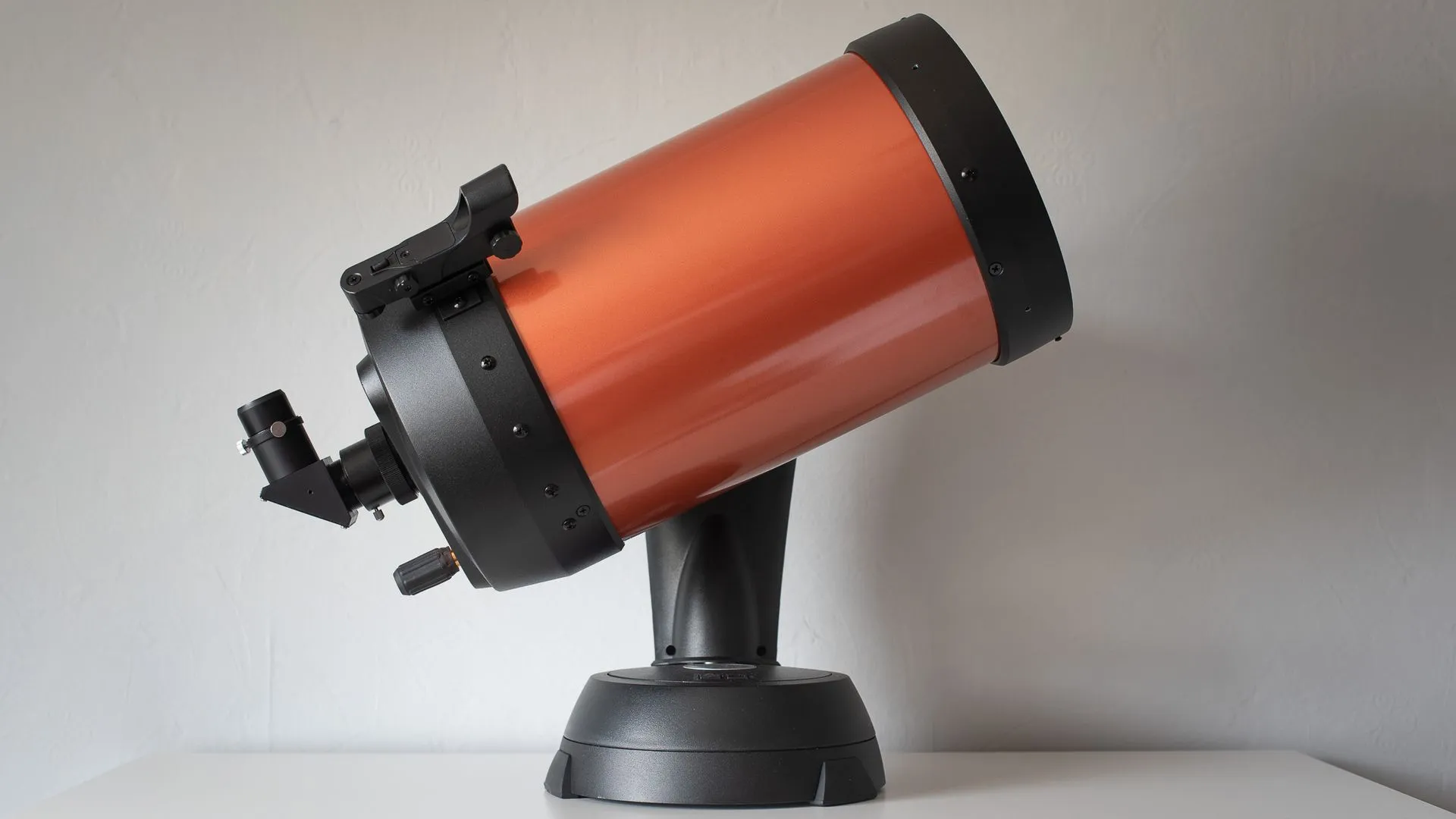 Celestron NexStar 8SE motorized amateur telescope for detailed viewsOften referred to as “The World’s Most Beloved Telescope,” the Celestron NexStar 8SE is a highly flexible and powerful 8-inch Schmidt-Cassegrain with a computerized GoTo mount. It strikes an excellent balance between aperture, portability (for its size), and ease of use, suitable for beginners yet powerful enough for serious exploration and astrophotography. Its SkyAlign technology and handheld remote make finding objects effortless. The large aperture provides incredibly bright and sharp views across a wide range of objects. While it consumes batteries quickly (external power recommended) and has a higher price point than entry-level models, its performance and versatility solidify its status as a top choice among amateur telescopes.
Celestron NexStar 8SE motorized amateur telescope for detailed viewsOften referred to as “The World’s Most Beloved Telescope,” the Celestron NexStar 8SE is a highly flexible and powerful 8-inch Schmidt-Cassegrain with a computerized GoTo mount. It strikes an excellent balance between aperture, portability (for its size), and ease of use, suitable for beginners yet powerful enough for serious exploration and astrophotography. Its SkyAlign technology and handheld remote make finding objects effortless. The large aperture provides incredibly bright and sharp views across a wide range of objects. While it consumes batteries quickly (external power recommended) and has a higher price point than entry-level models, its performance and versatility solidify its status as a top choice among amateur telescopes.
Celestron Astro Fi 102
 Celestron Astro Fi 102 portable amateur telescope outdoorsFor amateurs prioritizing portability, the Celestron Astro Fi 102 is a lightweight (only 6 lbs) Maksutov-Cassegrain telescope with integrated WiFi and GoTo control via smartphone. Its compact design makes it easy to transport to darker sky sites away from urban light pollution. It offers good views of the Moon and planets, and its motorized mount simplifies navigation through its large database of objects. While the optics and included tripod aren’t top-tier quality compared to pricier models, its ease of use and extreme portability make it an excellent option for on-the-go amateur astronomy enthusiasts.
Celestron Astro Fi 102 portable amateur telescope outdoorsFor amateurs prioritizing portability, the Celestron Astro Fi 102 is a lightweight (only 6 lbs) Maksutov-Cassegrain telescope with integrated WiFi and GoTo control via smartphone. Its compact design makes it easy to transport to darker sky sites away from urban light pollution. It offers good views of the Moon and planets, and its motorized mount simplifies navigation through its large database of objects. While the optics and included tripod aren’t top-tier quality compared to pricier models, its ease of use and extreme portability make it an excellent option for on-the-go amateur astronomy enthusiasts.
Sky-Watcher Skymax 150 PRO
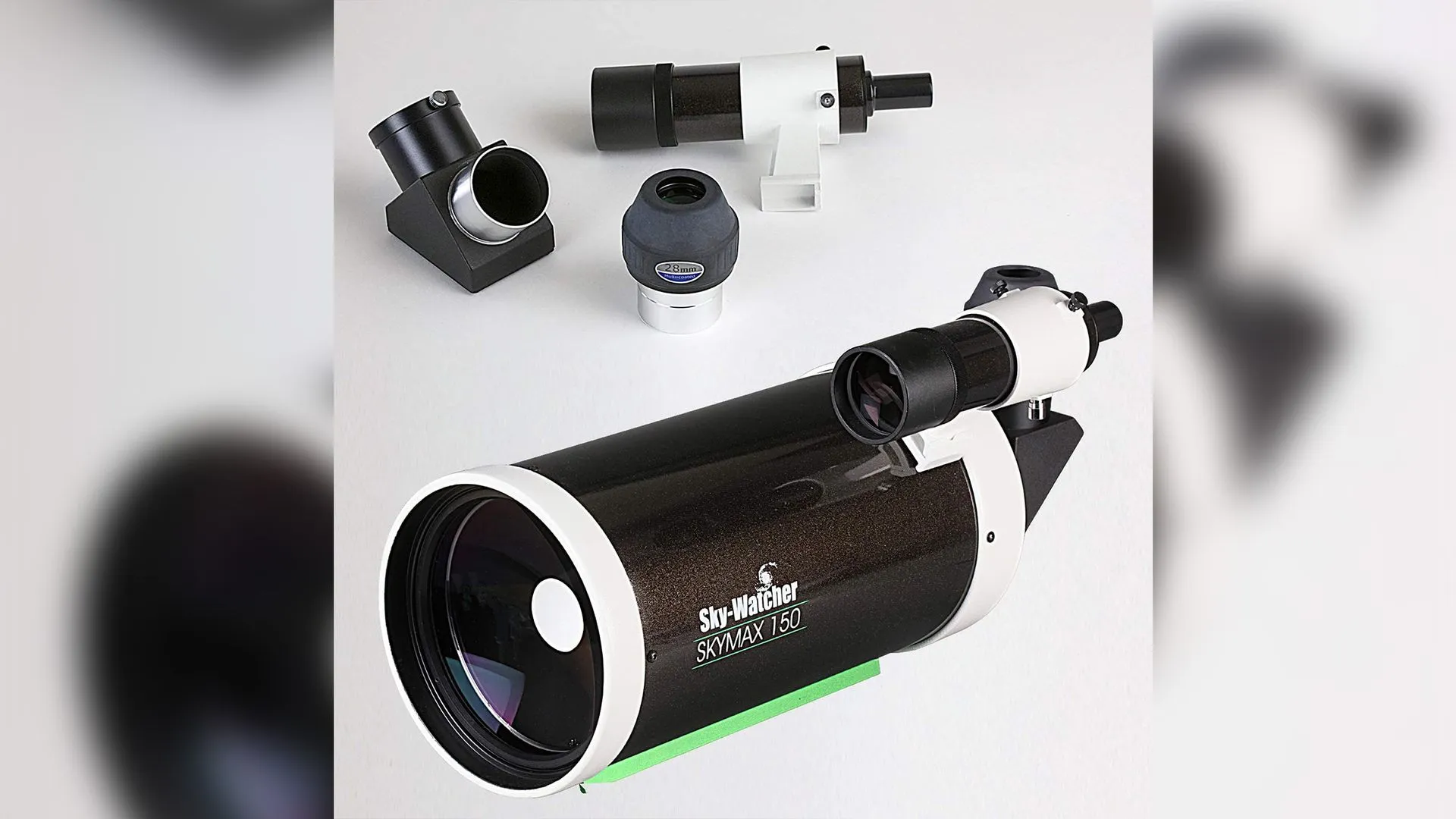 Sky-Watcher Skymax 150 PRO amateur telescope and accessoriesA favorite for astrophotographers, the Sky-Watcher Skymax 150 PRO is a 150mm Maksutov-Cassegrain optical tube assembly (OTA) designed for use with a sturdy equatorial mount. Its excellent optics provide crisp, distortion-free views, and its relatively lightweight design makes it suitable for transport. The long focal length is great for detailed views of planets and smaller deep-sky objects, and its compatibility with various accessories like cameras and filter wheels makes it highly versatile for imaging. While often sold without a mount or tripod, its optical quality and accessory support make it a top pick for dedicated amateur astrophotography.
Sky-Watcher Skymax 150 PRO amateur telescope and accessoriesA favorite for astrophotographers, the Sky-Watcher Skymax 150 PRO is a 150mm Maksutov-Cassegrain optical tube assembly (OTA) designed for use with a sturdy equatorial mount. Its excellent optics provide crisp, distortion-free views, and its relatively lightweight design makes it suitable for transport. The long focal length is great for detailed views of planets and smaller deep-sky objects, and its compatibility with various accessories like cameras and filter wheels makes it highly versatile for imaging. While often sold without a mount or tripod, its optical quality and accessory support make it a top pick for dedicated amateur astrophotography.
Unistellar eQuinox 2 Smart Telescope
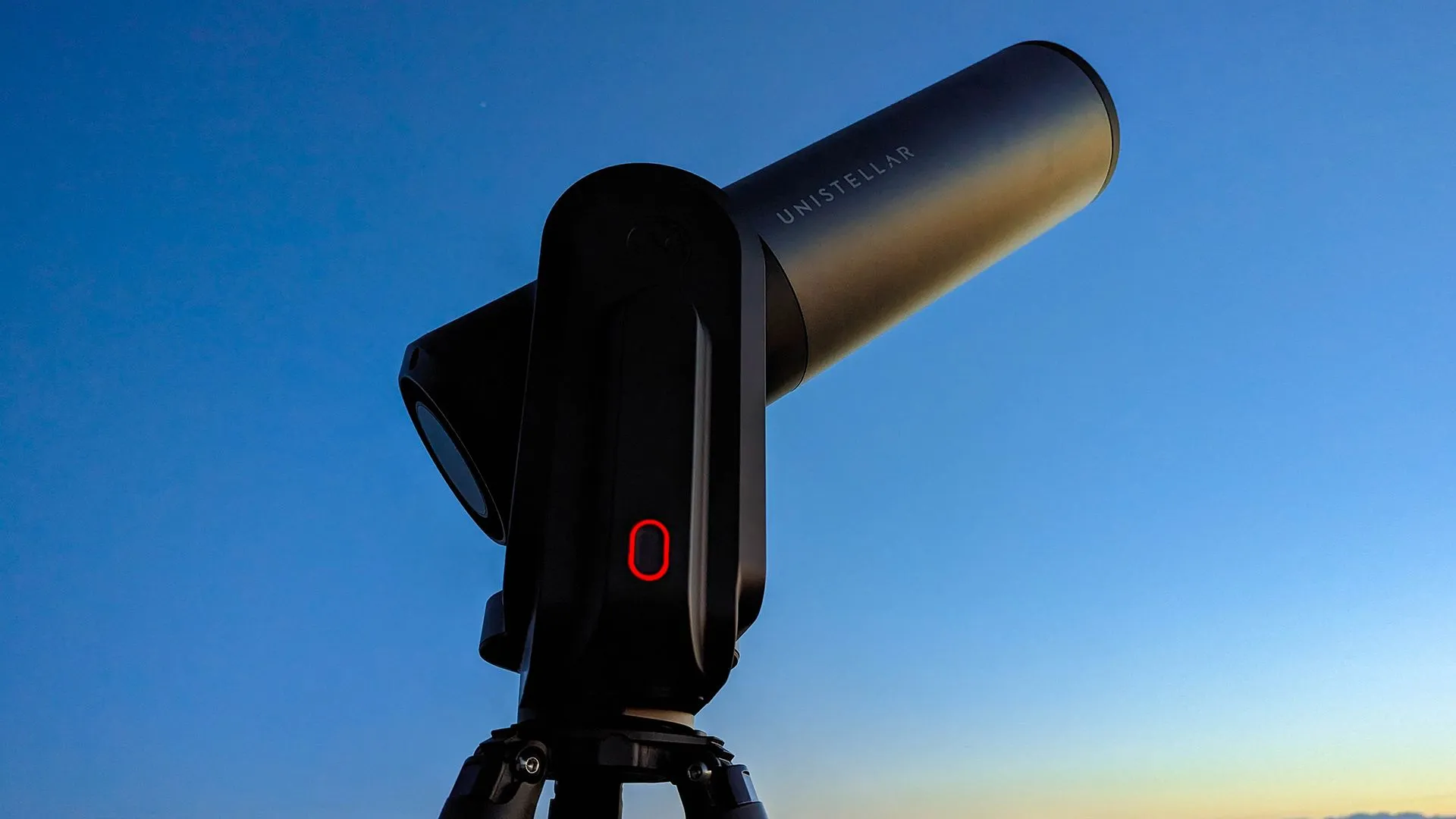 Unistellar eQuinox 2 smart amateur telescope in use at nightAnother high-tech “smart” telescope, the Unistellar eQuinox 2 is an automated Newtonian reflector that uses an image sensor and app control to provide enhanced views, particularly in light-polluted environments via its Smart Light Pollution Reduction feature. Setup is quick, and its GoTo system and extensive database make finding objects effortless. It’s ideal for those who prefer viewing on a screen and sharing images easily. Though expensive and not offering a traditional eyepiece experience or the highest image resolution, its simplicity and light pollution mitigation make it a powerful tool for urban amateur astronomers.
Unistellar eQuinox 2 smart amateur telescope in use at nightAnother high-tech “smart” telescope, the Unistellar eQuinox 2 is an automated Newtonian reflector that uses an image sensor and app control to provide enhanced views, particularly in light-polluted environments via its Smart Light Pollution Reduction feature. Setup is quick, and its GoTo system and extensive database make finding objects effortless. It’s ideal for those who prefer viewing on a screen and sharing images easily. Though expensive and not offering a traditional eyepiece experience or the highest image resolution, its simplicity and light pollution mitigation make it a powerful tool for urban amateur astronomers.
Celestron Advanced VX 8 EdgeHD
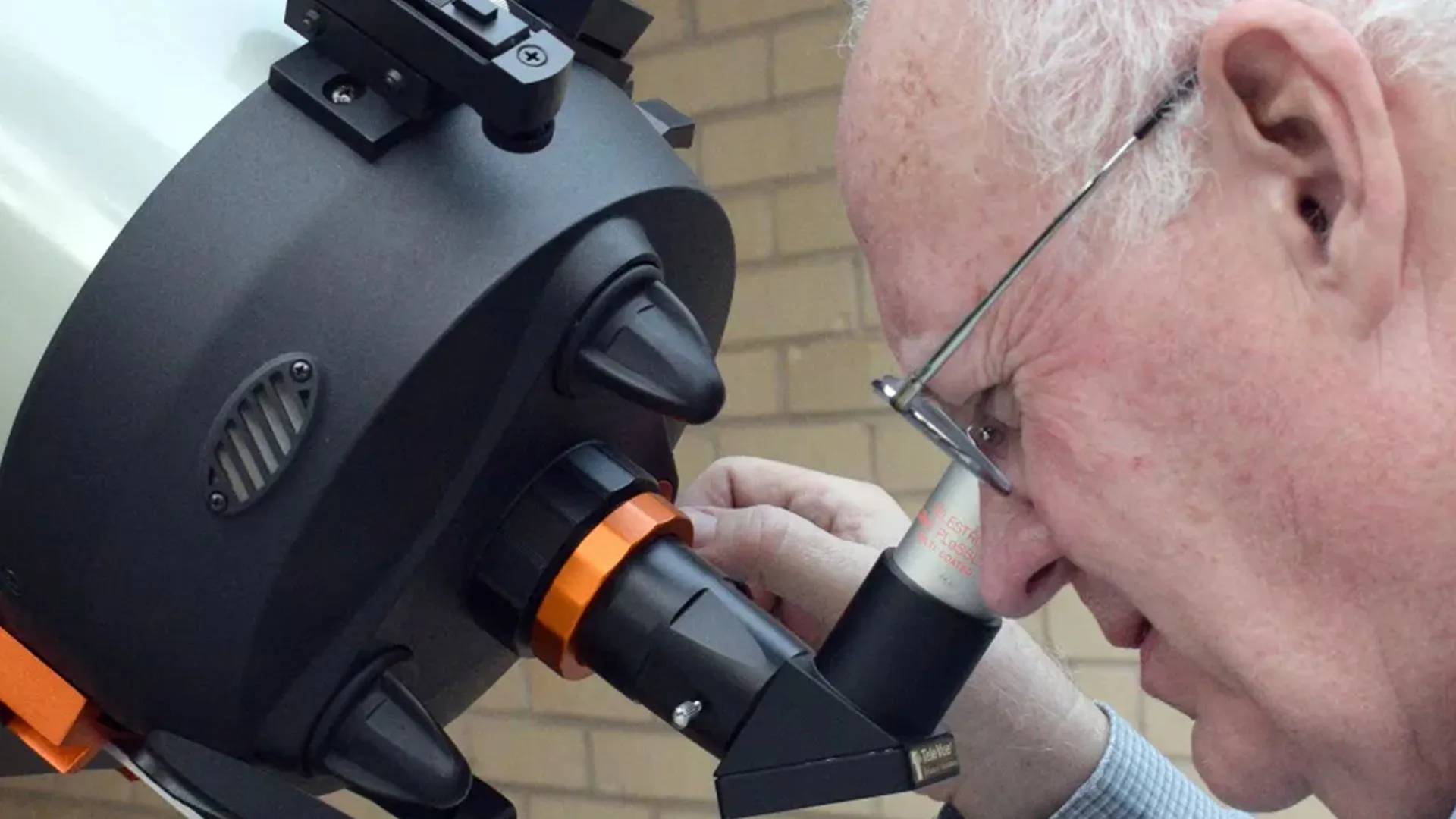 Celestron Advanced VX 8 EdgeHD advanced amateur telescopeA serious instrument for the experienced amateur, the Celestron Advanced VX 8 EdgeHD combines Celestron’s premium 8-inch EdgeHD optics (providing a flat field for pinpoint stars across the view) with a robust motorized equatorial mount. This combination is excellent for both visual observing of a wide range of objects (from planets to faint galaxies) and serious astrophotography. The mount has a high weight capacity and features designed for imaging, like periodic error correction. While it requires some knowledge for setup and is heavy, its optical performance and capability make it one of the best amateur astronomer telescope setups for long-term, advanced use.
Celestron Advanced VX 8 EdgeHD advanced amateur telescopeA serious instrument for the experienced amateur, the Celestron Advanced VX 8 EdgeHD combines Celestron’s premium 8-inch EdgeHD optics (providing a flat field for pinpoint stars across the view) with a robust motorized equatorial mount. This combination is excellent for both visual observing of a wide range of objects (from planets to faint galaxies) and serious astrophotography. The mount has a high weight capacity and features designed for imaging, like periodic error correction. While it requires some knowledge for setup and is heavy, its optical performance and capability make it one of the best amateur astronomer telescope setups for long-term, advanced use.
Celestron FirstScope 76 Tabletop telescope
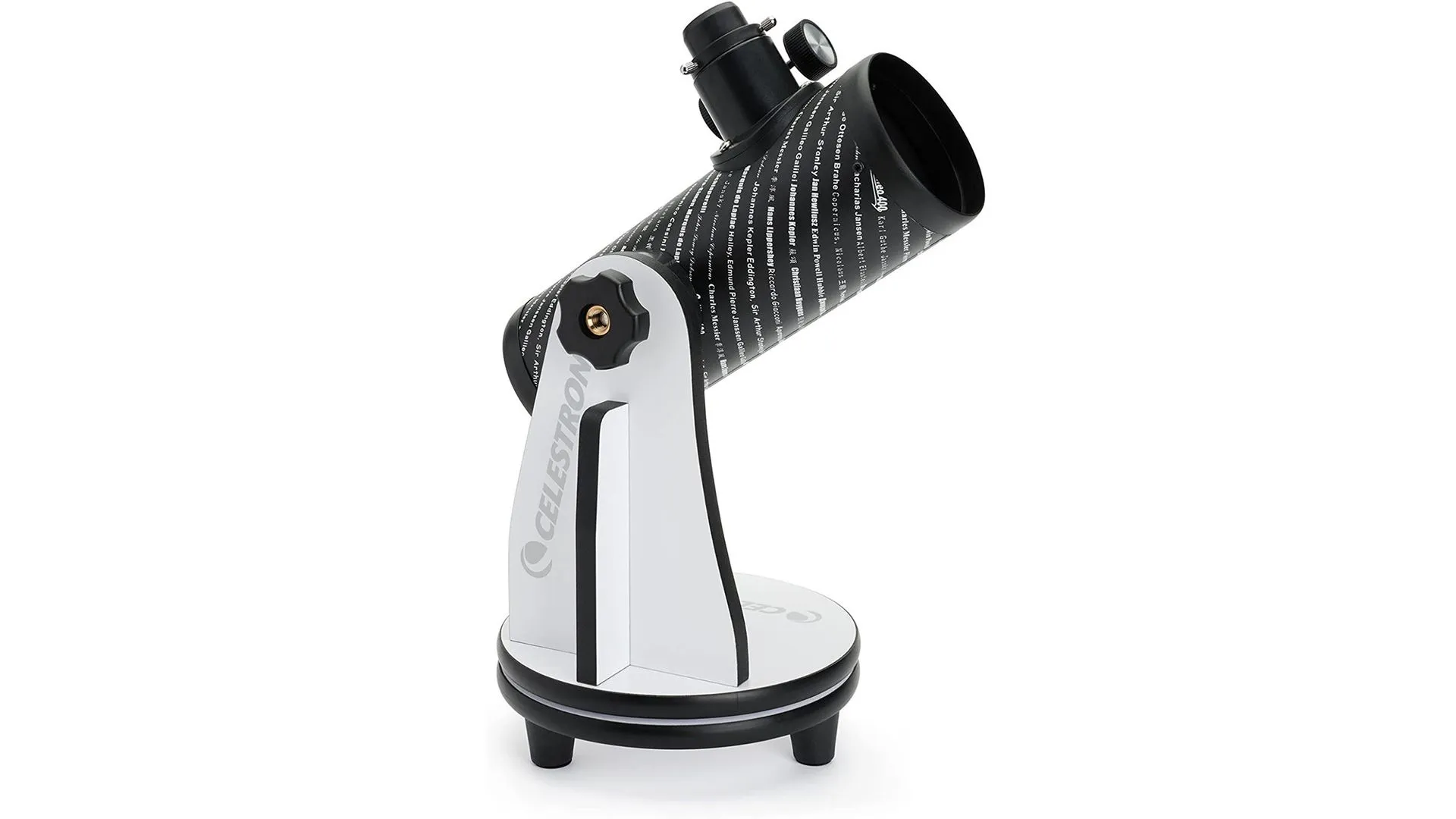 Celestron FirstScope 76 tabletop amateur telescopeDesigned with young or very casual observers in mind, the Celestron FirstScope 76 is a small, inexpensive tabletop reflector. It’s incredibly easy to use, arriving fully assembled, making it perfect for impatient hands. The 76mm aperture is sufficient for casual views of the Moon’s craters and brighter objects. While not powerful enough for detailed deep-sky observation and lacking a finderscope (a recommended addition), its robust build, low cost, and simplicity make it an excellent first step into astronomy for kids or a convenient, portable scope for quick peeks at the night sky. It’s among the most accessible amateur telescopes for beginners.
Celestron FirstScope 76 tabletop amateur telescopeDesigned with young or very casual observers in mind, the Celestron FirstScope 76 is a small, inexpensive tabletop reflector. It’s incredibly easy to use, arriving fully assembled, making it perfect for impatient hands. The 76mm aperture is sufficient for casual views of the Moon’s craters and brighter objects. While not powerful enough for detailed deep-sky observation and lacking a finderscope (a recommended addition), its robust build, low cost, and simplicity make it an excellent first step into astronomy for kids or a convenient, portable scope for quick peeks at the night sky. It’s among the most accessible amateur telescopes for beginners.
Frequently Asked Questions About Top Amateur Telescopes
Choosing your first or next telescope can bring up many questions. Here are answers to some common inquiries about top amateur telescopes.
How do I choose the right top amateur telescope for me?
Consider your budget, experience level, observing location (light pollution?), what you want to view (planets, galaxies, Moon?), and portability needs. Beginners might prefer a simple refractor or a computerized GoTo telescope, while those interested in deep-sky objects or astrophotography might lean towards larger aperture reflectors or specialized scopes. Reading reviews and understanding specifications like aperture and mount type are crucial.
What types of amateur telescopes are there?
The main types are Refractors (use lenses), Reflectors (use mirrors), and Catadioptrics (use both lenses and mirrors, like Schmidt-Cassegrains and Maksutov-Cassegrains). Each has different strengths regarding image quality, maintenance, and cost. Dobsonian telescopes are a popular type of reflector known for offering large aperture at a relatively low cost on a simple mount, making them excellent [amateur telescopes] for visual observing.
How does a refractor telescope work?
A refractor uses a primary lens at the front to bend light to a focal point at the back, where the eyepiece is. They are known for producing sharp, high-contrast images and are relatively low maintenance.
How does a reflector telescope work?
A reflector uses a large curved primary mirror at the back of the tube to collect and focus light. A smaller secondary mirror redirects this light to the side (in a Newtonian) or back through a hole in the primary mirror (in some designs) where the eyepiece is located. They offer excellent value for aperture, particularly useful for viewing faint deep-sky objects.
How does a catadioptric telescope work?
Catadioptric telescopes, like Schmidt-Cassegrains and Maksutov-Cassegrains, use a combination of mirrors and a correcting lens (Schmidt corrector plate or Maksutov meniscus lens) to fold the light path and correct optical aberrations. This results in a compact tube design for their focal length and aperture, offering versatility for various observing targets.
What is a finderscope on an amateur telescope?
A finderscope is a small, low-power aiming device mounted on the main telescope. Because the main telescope has a narrow field of view at higher magnifications, the finderscope’s wide field makes it much easier to locate celestial objects and center them before looking through the main eyepiece. Red dot finders and magnified finderscopes are common types.
What does aperture, magnification, and focal length mean on a telescope?
- Aperture: The diameter of the primary lens or mirror, determining light-gathering ability and resolution. Larger aperture means brighter images and finer detail.
- Focal Length: The distance the light travels to the focal point. Affects the telescope’s overall length and, when combined with eyepiece focal length, determines magnification.
- Magnification: How much larger an object appears. Calculated by Telescope Focal Length / Eyepiece Focal Length. Useful magnification is limited by aperture and viewing conditions.
How do telescope eyepieces work?
Eyepieces are small lenses inserted into the focuser of a telescope. They magnify the image formed by the telescope’s main optics. Different eyepieces have different focal lengths (measured in millimeters); shorter focal lengths provide higher magnification. Having a selection of eyepieces allows you to view the same object at different magnifications.
How we test the best telescopes
Finding Your Perfect Amateur Astronomy Telescope – Expert Guide 2025
Discover the Best Michigan Places to Visit for Unforgettable Adventures in 2024
Discover the Top 11 nevada places to visit
To provide reliable recommendations for the top amateur telescopes, we conduct thorough hands-on testing. Our expert reviewers evaluate each telescope’s optical performance, ease of setup and use, build quality, included accessories, and overall functionality under real observing conditions. We assess image clarity, contrast, sharpness, and the presence of optical aberrations across different celestial targets (Moon, planets, deep-sky objects). Mount stability, tracking accuracy (for motorized scopes), and the effectiveness of features like GoTo systems or smartphone integration are also rigorously tested. We consider the telescope’s suitability for different user levels and applications, ensuring our reviews reflect practical experience.
Conclusion
Embarking on a journey into amateur astronomy is a deeply rewarding experience. The right telescope serves as your window to the cosmos, allowing you to witness the breathtaking beauty and complexity of the universe firsthand. Whether you choose a simple refractor for crisp planetary views, a powerful reflector for delving into deep space, or a high-tech computerized scope for effortless navigation, selecting one of the top amateur telescopes discussed here provides a solid foundation for your cosmic explorations. By considering your needs, understanding the key features, and leveraging expert insights, you can find the perfect instrument to begin or continue your stargazing adventure, connecting with the universe one celestial object at a time.
